“Perhaps contemporary art is an art to survive our contemporaneity as an artist.”
—Boris Groys
Since the early days of modernism, artists have faced a peculiar dilemma with regard to the economy surrounding their work. By breaking from older artistic formations such as medieval artisan guilds, bohemian artists of the nineteenth century distanced themselves from the vulgar sphere of day-to-day commerce in favor of an idealized conception of art and authorship. While on the one hand this allowed for a certain rejection of normative bourgeois life, it also required that artists entrust their livelihoods to middlemen—to private agents or state organizations. One result was that some of the most influential modernist artists, from Paul Gauguin to Mondrian and Rodchenko, died in abject poverty, not because their work was unpopular but because the economy produced by the circulation and distribution of their work was entirely controlled by others, whether under capitalist or communist regimes.1 While a concern with labor and fair compensation in the arts, exemplified by such recent initiatives as W.A.G.E. or earlier efforts such as the Art Workers Coalition, has been an important part of artistic discourse, so far it has focused primarily on public critique as a means to shame and reform institutions into developing a more fair system of compensation for “content providers.”2 It seems to me that we need to move beyond the critique of art institutions if we want to improve the relationship between artists and the economy surrounding their work.


Here I am not particularly interested in the power relations between artists and the art market, a cyclical conversation that seems to dominate much of art writing today. Historically, art and artists have existed both with and without a market. Important art was produced in socialist countries for most of the twentieth century, in the absence of an art market. Much of art production today occurs in places without a market for art, or in countries where a capitalist market system is not the dominant form of social and cultural organization. Art can clearly exist without a market, but artists fundamentally rely upon a certain economy in order to live and make art in the first place. Furthermore, it’s important to note that “economy” and “market” are not synonymous terms: a market is just one facet of the economic sphere, coexisting with many other forms of exchange, from barter, debt, and favors to a gift economy.
The term “political economy” is more or less synonymous with “economy” in our contemporary lexicon: both designate the distribution of goods and services under a certain political regime—be it capitalist, feudal, or communist—along with all the regulations, laws, and conventions governing such distribution. According to Aristotle, however, “economy” is the way to arrange things within a household (“oikos” means “house”), and “politics” is the way to arrange things between households—between “polites” or citizens, within the polis. So political economy combines both things. At some point in the late nineteenth century, the adjective “political” was dropped in English-language writing, and we ended up with simply “economy.” In one of the first studies of the economy of art—a book called Political Economy of Art published in 1857—the critic John Ruskin laments the confusion regarding the interpretation of the word “economy,” emphasizing that economy does not automatically imply money, frugality, or expenditures, but rather taking care of a household and managing labor. This would later becomes an important point in Hannah Arendt’s analysis of work and labor in the Human Condition.3
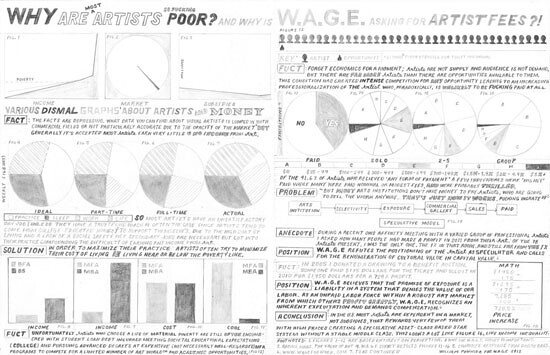

Ruskin’s book is based on two lectures he gave on July 10 and 13, 1857, in Manchester—a city whose labor conditions had been central to the work of Friedrich Engels and Karl Marx just a few years earlier (a fact of which Ruskin claimed to have no knowledge, citing only some writings of John Adams he had read long before). The lectures and the book look at the value of artistic work through a framework of education, collecting, patronage, accessibility to the public, and artistic genius. Ruskin argues for a childlike, innocent position for the artist, who should not get involved in the business of art. Ruskin believes that it is the patron (be it the state or a private collector) who is the patriarchal head of the household of art and whose responsibility it is to find and train artistic geniuses, to tell them what to do. Ruskin wants the prices for art to be low, preferably pegged to the actual time spent by an artist on the production of a specific work. In other words, Ruskin wants art production to be a form of wage labor.
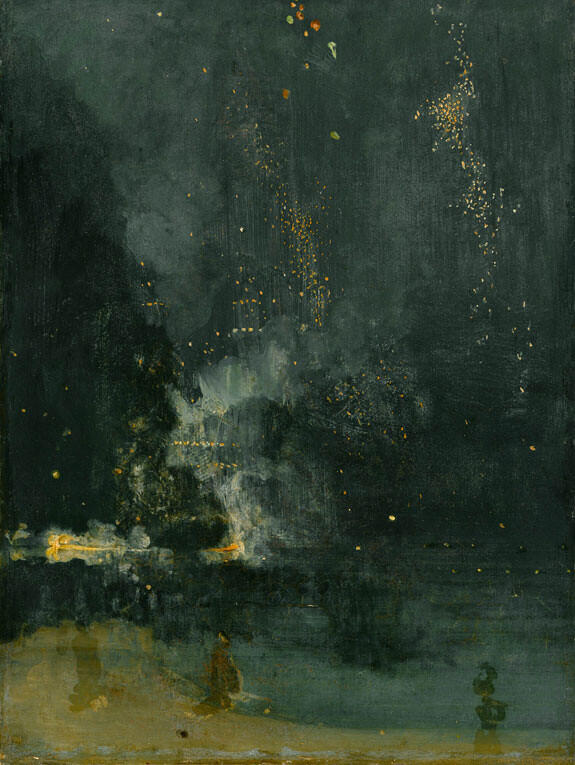

In 1878, the painter James Abbott McNeill Whistler took Ruskin to court for libel. Ruskin had written a rather positive review of an exhibition at the Grosvenor Gallery—a privately owned space exhibiting works that had been rejected by the Royal Academy. Ruskin singled out Whistler’s Nocturne in Black and Gold: The Falling Rocket, accusing the artist of charging too high a price for what Ruskin thought was a hastily made painting:
For Mr. Whistler’s own sake, no less than for the protection of the purchaser, Sir Coutts Lindsay ought not to have admitted works into the gallery in which the ill-educated conceit of the artist so nearly approached the aspect of willful imposture. I have seen, and heard, much of Cockney impudence before now; but never expected to hear a coxcomb ask two hundred guineas for flinging a pot of paint in the public’s face.4
Whistler was outraged and sued Ruskin for a thousand pounds and the costs of the trial. The trial became a public spectacle, the first of its kind. It also became a public seminar on art. Whistler’s case was based on his argument that a painting is about nothing but itself; Ruskin’s case was based on his belief that art should have moral value. The court heard arguments about the duties of art critics and the role of labor in art. Ruskin was too ill to attend the trial and was represented by lawyers who asked Whistler how long it had taken him to make the painting. Whistler replied that it was completed in a day or two.
Lawyer: The labor of two days, is that for which you asked two hundred guineas?
Whistler: No, I ask it for the knowledge I have gained in the work of a lifetime.5
Whistler won the case but received only a symbolic settlement: a quarter of a penny. Ruskin’s friends covered his legal expenses; Whistler went bankrupt covering his own.
Ruskin did not single-handedly invent positions and notions popularized through his book and lectures on the economy of art; rather, he articulated existing Victorian attitudes regarding the role of artists and culture, which themselves reflected the British and Dutch art systems of the time, emphasizing a certain element of commerce in art. A somewhat different system of cultural organization existed in France, where in 1648 a royal decree established a government-funded Art Academy. The Academy removed painting and sculpture from the control of artistic guilds, which emphasized craft, and instead created a centralized institution that treated visual art more like the liberal arts, such as literature. While poets and writers like Baudelaire were often compensated per line of text for publishing their work (Baudelaire’s rate apparently was 0.15 francs per line), as far as I know, no one in France proposed subjecting them to wage labor.
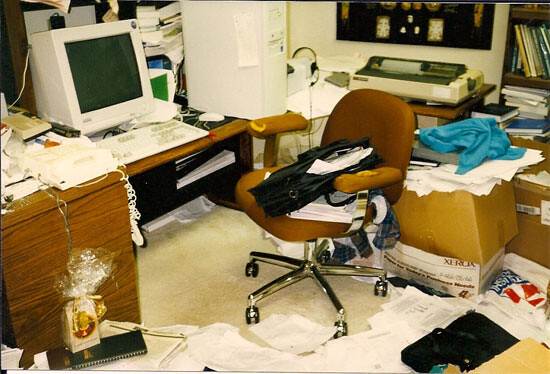

Early modernist poets like Baudelaire were extremely influential in shaping the attitudes of artists towards commerce and business. Implicit in the way of life of “bohemian” artists and writers in the Latin Quarter was a rejection of bourgeois professional and commercial pursuits, as was a rejection of industrialization and emergent capitalism. Baudelaire was actually rather critical of the bohemians, being very much a radical dandy, an aristocrat who despised the squalor of bohemian life. Nevertheless, he spent much of his life in this milieu and immortalized it in his work: “In murky corners of old cities where everything—horror too—is magical, I study, servile to my moods, the odd and charming refuse of humanity.”6 Despite the marginality and political insignificance of bohemia, its cultural impact was absolutely enormous. It remains ever-present, a specter that reappears in various times and places.
Andy Warhol’s Factory is fascinating in this respect: both a murky, magical corner for misfits and eccentrics, and simultaneously the workplace of the first self-proclaimed Business Artist. Warhol’s artistic position is very interesting insofar as it combined stances that were thought to be diametrically opposed: he was at once a dandy, a bohemian, but also someone who did not disguise his interest in business and commerce. His interest in business did not only extend to sale of his artwork; he also pursued the publication of a commercial magazine, film production, a television show—what amounted to his own media industry. To my mind, Warhol’s position was much more honest and productive than that of artists who pretend that the artist can or should stay innocent by delegating (or appearing to delegate) business-related activity to gallerists or other agents, and who maintain that this is the only condition in which critical or culturally significant art can be produced. By turning his art into a kind of a business, Warhol managed to achieve independence, though not independence from the art market.
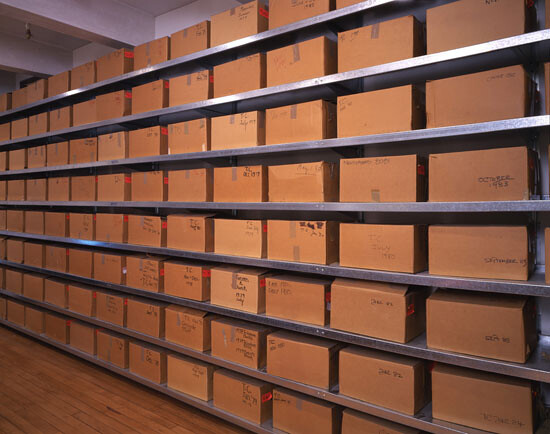

But since his time, Warhol’s economic independence seems to have been misunderstood. The independence that came from his bridging of the bohemian sphere and the sphere of day-to-day commerce has been converted into a vast proliferation of so-called artistic practices that treat art as a profession. But art is not a profession. What does being professional actually mean under the current conditions of de-skilling in art? We should probably be less concerned with being full-time, art-school-trained, professional artists, writers, or curators—less concerned with measuring our artistic worth in these ways. Since most of us are not expected to perfect any specific techniques or master any craft—unlike athletes or classical musicians, for example—and given that we are no longer tied to working in specific mediums, perhaps it’s fine to be a part-time artist? After all, what is the expertise of a contemporary artist? Perhaps a certain type of passionate hobbyism, a committed amateurism, is okay: after all, we still live in a reality largely shaped by talented amateurs of the nineteenth century, like Thomas Edison and so many others.7 I think it’s perfectly acceptable to work in some other capacity in the arts, or in an entirely different field, and also to make art: sometimes this situation actually produces much more significant work than the “professional art” we see at art fairs and biennials. Ilya Kabakov supported himself for decades by being a children’s book illustrator. Marcel Duchamp worked as a librarian and later sold Brancusi’s work to make a living, while refusing to be dependent on sales of his own work.
It interesting to note that this emphasis on professionalization emerged simultaneously with the disappearance of bohemia, which is usually described as a shared creative space that allowed for fluid communication between poets, artists, dancers, writers, musicians, and so forth. The notion of bohemia as something to aspire to went out the window a few decades ago; it vanished at the same time as the visual art sphere was becoming more segregated from other fields of art. “Bohemian” has become a primarily derogatory term that seems to imply a kind of uncommitted, naive dilettantism, but within the history of art it has a greater significance. According to T.J. Clark, bohemia refers to a movement by a group of artists, writers, and poets who apparently renounced the normative bourgeois society, a move that, unlike the gestures of the avant-garde, was not a calculated temporary tactic intended only so that one could return to the salon of art in a more advantageous position, but a more permanent departure.8 The bohemian artist would absolutely reject the notion of professionalism in the arts—this was something for lawyers, accountants, and bankers, not artists.9
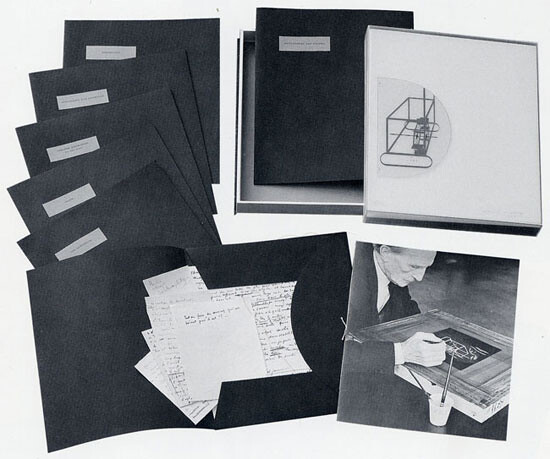

These days it’s becoming more and more difficult to imagine the production of significant art without a training system that educates future producers of art, its administrators and, to some extent, its consumers. However, until only a few decades ago, many if not most artists, curators, and critics, never attended masters programs or studied curatorship and critical writing in specialized training programs. The field of art is becoming professionalized in a very, very narrow way. There’s still the old problem that professionalization is really about a division of labor, and a division of labor produces alienation.10 It’s a contradiction that a lot of people go into the arts because they want to be a little less alienated from what they do in life, even as what is increasingly imposed on artists, curators, writers—and it comes both from the market and public sector—is the professionalization and precarization of their activity.
The problem of professionalization is connected to the proliferation of MFA programs, which have become a prerequisite for young people entering the arts. In a sense, universities and academies have created a perfect economic feedback loop that perpetuates their own existence: most artists depend on having a teaching position. This is because, as Walid Raad recently pointed out, the average life-span of financial success in the art market (in places where there is such a thing)—a period during which a successful artist’s work is in active demand by collectors—is a mere four years.11 How do you support yourself when your work does not sell anymore? You teach—and to qualify for a teaching position, you need an MFA degree. This means that most artists who aspire to a life-long practice have little choice but to enroll in MFA programs and often pay astronomical fees and go into debt in order to have a chance of teaching in the future or selling their work in the lucrative art market. But unlike other fields, such as law or medicine, where graduates can reasonably expect a job upon graduation, there are no guarantees that an artist with an MFA degree will find a teaching job. With recent shifts in hiring policies at most universities—towards part-time, untenured, adjunct labor—very few artists ever get a tenured, secure position. To me, this resembles a kind of pyramid scheme or institutional blackmail in which money is extracted using false promises, with the benefits going to very few—primarily the institutions themselves.12
I attended graduate school in the ‘90s. I did all of the coursework and the final exhibition, wrote the dissertation and submitted it. I thought I was all done, but then suddenly I found out that in order to get the degree itself, I needed to package my dissertation and photographs in a very specific type of a black plastic folder, which could only be purchased at one stationery store located in Manhattan near Canal Street. The secretary at the art department told me that the Chairman kept the folders in a closet in his office, and that the folders had to conform exactly to the dimensions of the closet’s irregular shelves. No other folders would be accepted. I was idealistic and thought that the Master of Fine Arts degree had something to do with the acquisition of knowledge … but it came down to a surreal formalism. I never got the folder or the degree!
It seems to me that MFA programs have become a tool of indoctrination that has had an unprecedented homogenizing effect on artistic practices worldwide, an effect that is now being replicated with curatorial and critical writing programs. At the center of the problem is the black plastic folder: at the school I attended, the folder itself became the goal of the program—both the framing and the ultimate content of graduate studies in art. A folder, identical to hundreds of other folders arranged on a shelf, became a tool to valuate and legitimize artistic practice through a forced standardization. My school was not very different from how most museums, art centers, and galleries operate today, whereby systemic and logistical needs often demand legibility according to predefined terms. In the process, the folder replaces art itself.
The market of art is not merely a bunch of dealers and cigar-smoking connoisseurs trading exquisite objects for money behind closed doors. Rather, it is a vast and complex international industry of overlapping institutions which jointly produce artworks’ economic value and support a wide range of activities and occupations including training, research, development, production, display, documentation, criticism, marketing, promotion, financing, historicizing, publishing, and so forth. The standardization of art greatly simplifies all of these transactions. For a few years now I have experienced a certain sense of déjà vu while walking through art fairs or biennials, a feeling that many other people have also commented on: that we have already seen all these works that are supposedly brand new. We are experiencing the impact of contemporary art as a globally traded commodity that is produced, displayed, and circulated by an industry of specially trained professionals. The folder that replaces the art has undergone only a slight modification: into an investment portfolio.
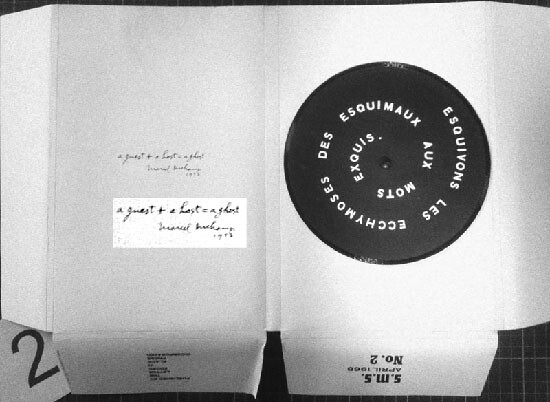

This is not a new observation: I think Marcel Duchamp already fully understood this danger a hundred year ago. There are, of course, so many aspects of his work that could be mentioned in this essay, from his Standard Stoppages to his peculiar refusal to make a living by selling his artworks. In a way, one can understand much of Duchamp’s work as a repeated act of offering the folder back to the art establishment: whether in the shape of a valise, a box, a collection of notes and photographs, a literal folder, or even an elaborate gesamkunstwerk like his Etant donné, containing all the indexical references to his work. However, the folders he provided contained a bomb: they were capable of bringing down the shelf they were stored on.
Today it would be rather futile to try to reconstitute bohemia—the free-flowing, organic creative space—because it never really existed within the constellation of institutions of art, the art market, and the art academy. If Warhol’s Factory was an entry into art that enabled a group of people of very different backgrounds to enter a certain kind of productive modality (both within and in spite of the surrounding economy), it was a space of free play that no longer exists. Instead, what we have now are MFA programs: a standardization not even of bohemia, but only its promise. Just to be clear: I am not advocating that artists should remain innocent, childlike amateurs; a certain mobilized dissidence wielded by young people engaging in specialized study in art structures can amount to something quite powerful. What I mean is that if one is really looking to produce a different kind of art, it is necessary to step through the standardization and professionalization it promises, and discover a way to access whatever may be on the other side—even if what one finds does not resemble art as we currently understand it.
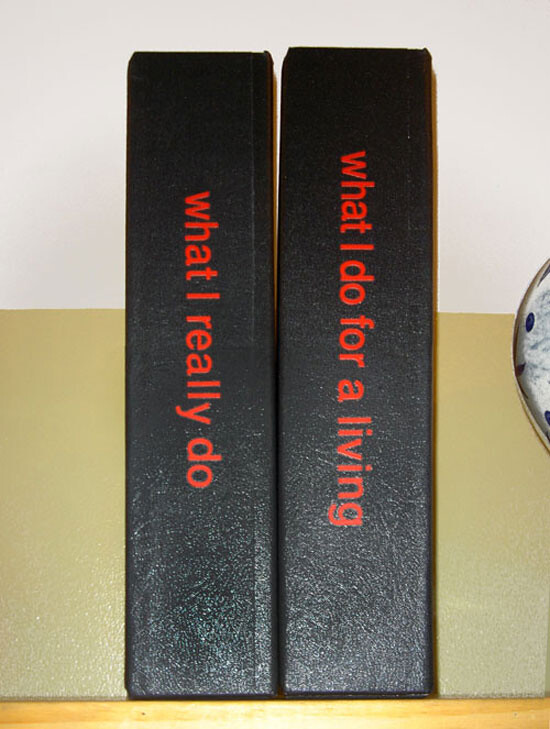

This supposes that, somewhere close to the center of what we all know art to be, there is a kind of open, undefined quality. And this is something I feel to be increasingly difficult to develop and maintain both in art and other areas of life, when there are so many pressures in the market-driven economy to divide labor, to professionalize. As artists, curators, and writers, we are increasingly forced to market ourselves by developing a consistent product, a concise presentation, a statement that can be communicated in thirty seconds or less—and oftentimes this alone passes for professionalism. For emerging artists and curators there is an ever-increasing number of well-intentioned programs that essentially indoctrinate them into becoming content providers for an art system whose values and welfare are wholly defined by its own logic of supply and demand.
Being a professional should not be the only acceptable way for us to maintain our households, particularly when most interesting artists are perfectly capable of functioning in at least two or three fields that are, unlike art, respected by society in terms of compensation and general usefulness. I feel that we have cornered ourselves by denying the full range of possibilities for developing our economies. In fact, the economic dimension of art is more often wholly suppressed under the specter of bohemia, condemning artists to a precarious and often alienating place in the day-to-day relations that hold other parts of society together. While artists like Warhol took some pleasure in operating a frontier economy that produced value and new economic protocols—much in the way a government might manage an economy—this is not the concern of most other artists, who would prefer to have a more straightforward connection to society without at the same time having their work regarded as mere craft. Unless hard-pressed by circumstances, we still think that the proper thing to do is to wait for a sponsor or a patron to solve our household problems and to legitimize our work. In fact, we don’t need their legitimacy. We are perfectly capable of being our own sponsors, which in most cases we already are when we do other kinds of work to support our art-work. This is something that should not be disavowed, but acknowledged openly. We must find the terms for articulating what kind of economy artists really want. This can be quite complicated, since not addressing this question implicitly reinforces the simplistic myth of the artist as an isolated and alienated genius. Without a captivating alternative, artists will always defer to this myth out of habit, in spite of how complex and interesting their real household economy may be. I suspect that if affirmed fully and radically, this condition could lead to a fluid, liberated state close to what Marx envisioned for humanity—the messianic promise at the heart of communism.13 After all, we are never one thing at all times.
Gauguin died in a charity clinic on Tahiti, apparently due to poor treatment. He was broke and could not afford a proper hospital. While his work was selling relatively well in Paris, his dealer was not sending Gauguin’s share of the money. Rodchenko’s pension was stripped away after he was expelled from the artists’ union in the USSR. Mondrian died in poverty of pneumonia.
For the website of Working Artists and the Greater Economy (W.A.G.E.), see →.
This point regarding Arendt is also discussed in my essay “Art without Work?”, e-flux journal 29 (November 2011). See →.
Quoted in James Abbott McNeill Whistler, The Gentle Art of Making Enemies (1890). See →.
Ibid.
Charles Baudelaire, “The Little Old Women,” in Les Fleurs du Mal, trans. Richard Howard (New Hampshire: David R. Godine, 1982): 94.
This was recently pointed out to me by Shuddhabratha Sengupta.
T.J. Clark, The Image of the People: Gustave Courbet and the 1848 Revolution (Berkeley, CA: University of California Press, 1999): chapter 1.
Martha Rosler suggests that such attitudes toward professionalism were common among artists throughout the ‘60s and ‘70s as well.
Karl Marx, Economic and Philosophical Manuscripts of 1844. See →.
This was part of Walid Raad’s lecture performance at documenta (13). He got the figures from Artist Pension Trust.
What I am describing here is the dominant US and UK art school model, but there are other problems, and also other potentials, with nation-state type academies or pure neoliberal non-degree commercial “schools,” like the ones tacked on to museums and art spaces.
“… in communist society, where nobody has one exclusive sphere of activity but each can become accomplished in any branch he wishes, society regulates the general production and thus makes it possible for me to do one thing today and another tomorrow, to hunt in the morning, to fish in the afternoon, rear cattle in the evening, criticize after dinner, just as I have in mind, without ever becoming hunter, fisherman, shepherd or critic.” Karl Marx, The German Ideology (1845): chapter 1. See →.
